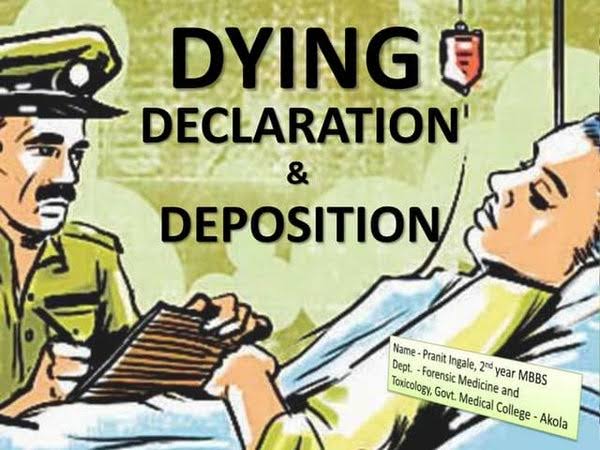Sham Sunder, J.@mdashThis appeal is directed against the judgment of conviction dated 21.01.1997, and the order of sentence dated 22.01.1997. rendered by the Court of Addl. Sessions Judge, Kaithal, vide which it convicted the accused/appellant Sewa Singh, for the offence punishable u/s 15 of the Narcotic Drugs & Psychotropic Substances Act, 1985 (hereinafter called as "the Act'' only) and sentenced him to undergo rigorous imprisonment for a period often years, and to pay a fine of Rs. 1 lakh, and in default of payment of the same, to undergo rigorous imprisonment for another period of one year.
2. The facts, in brief are that on 11.02.1995. at about 1.15 P.M. Surta Ram. ASI, alongwith Bal Kishan. UGC, and other police officials, was present near village Bhatia, in connection with patrolling. The accused was noticed coming from the side of Gaghar Barrage, having a plastic bag, on his head: On seeing the police party, he turned back, and started walking swiftly. He was apprehended on suspicion. Search of the bag, being carried by the accused, was conducted in accordance with the provisions of law. It was found containing 16 kgs. of poppy-husk. A sample of 250 grams was separated. The sample as well as the remaining poppy-husk, were duly sealed with the seal bearing impression ''SR'', and taken into possession vide a separate recovery memo. Ruqa was sent to the Police Station, on the basis whereof, formal FIR was registered. The accused was arrested. After the completion of investigation, the accused was challaned.
3. On his appearance, in the Court of the Committing Magistrate, the copies of documents, relied upon by the prosecution, were supplied to the accused. After the case was received by commitment, in the Court of Sessions, charge u/s 15 of the Act. was framed against him, to which he pleaded not guilty and claimed trial.
4. The prosecution, in support of its case, examined Ram Chander, Constable, PW1, Ram Pal, Constable, PW2, Prem Pal, SI, PW3, Surta Ram, ASI, PW4, Baljit Singh, UGC, PW5, and Sukhdev Singh, DSP. PW6. Thereafter, the Public Prosecutor for the State, tendered into evidence report of the Chemical Examiner, Ex. PJ. and closed the same.
5. The statement of the accused u/s 313 Cr.P.C. was recorded, and he was put all the incriminating circumstances, appearing against him, in the prosecution evidence. He pleaded false implication. He, however, produced no evidence, in his defence.
6. After hearing the Public Prosecutor for the State, the Counsel for the accused, and, on going through the evidence, on record, the trial Court, convicted and sentenced the accused, as stated hereinbefore.
7. Feeling aggrieved, against the judgment of conviction, and the order of sentence, rendered by the trial Court, the instant appeal, was filed by the accused/appellant.
8. I have heard the Learned Counsel for the parties, and have gone through the evidence and record of the case, carefully.
9. The Counsel for the appellant, at the very outset, contended that though the alleged recovery, from the accused, was effected at a public place, no independent witness, was joined by the Investigating Officer, despite availability. He further contended that even no attempt was made by the investigating Officer, to summon any independent witness, to join the search and seizure proceedings. He further contended that, on account of this reason, a cloud of doubt was cast on the prosecution story, and the trial Court failed to take into consideration, this most important factor, as a result whereof, miscarriage of justice occasioned. The submission of the Counsel for the appellant, in this regard, appears to be correct. Surta Ram, the Investigating Officer, during the course of cross-examination, stated that village Bhatia, is situated at a distance of I k.m., from the place of recovery. He admitted that no attempt was made to summon any respectable, from village Bhatia, at the time of recovery. However, he volunteered, that request was made to several persons, working in the fields, for their joining, in the raiding party, but they refused to join because of fear of enmity. However, no mention of this fact, was made, in the ruqa, or in the case diary. Had an attempt been made by the Investigating Officer, to join an independent witness, as stated by him, during the course of cross-examination, he would have certainly made a mention thereof, in the ruqa. and other documents, prepared by him, at the spot. The mere fact that he did not make a mention of this fact, either in ruqa or other documents, in itself goes a long way to prove that no attempt, whatsoever, was made to join an independent witness, despite availability. It was, therefore, a deliberate and" intentional lapse, on the part of the Investigating Officer. It is, no doubt, true that evidence the of the official witnesses, cannot be distrusted and discarded, merely, on account of non-joining and non-examination of an independent witness. However, when an independent witness was available, at the time of search and seizure, but despite that he was not joined, by the Investigating Officer, the case of the prosecution becomes highly doubtful. The explanation furnished by the investigating Officer, that an attempt was made, to join an independent witness, has been found to be not correct. Had an independent witness been joined, his evidence would have certainly lent credence to the case of the prosecution, which is based on the evidence of the official witnesses only. A cloud of doubt was cast, on the case of the prosecution, on account of non-joining of an independent witness, despite availability. The trial Court, however, failed to take into consideration, this important fact, as a result whereof, miscarriage of justice occasioned.
10. It was next contended by the Counsel for the appellant, that though the alleged recovery was effected on 11.02.1995, yet the sample was sent to the Office of the Forensic Science Laboratory, Madhuban, on 20.02.1995. He further submitted that no explanation, whatsoever, was furnished by the prosecution witnesses, as to why, delay of 9/10 days, was caused in sending the sample to the office of the Forensic Science Laboratory Haryana, Madhuban. The delay in sending the sample, to the Laboratory assumed added significance, as the seal after use, by the Investigating Officer, was handed over to his junior Police official, whereas the seal after use by the S.H.O, was retained by him. It means that, the Investigating Officer, and the S.H.O., could certainly tamper with the case property, and the contents of the sample, until it (sample) was sent to the office of the Forensic Science Laboratory. Had any explanation, been furnished, the matter would have been considered, in the light thereof, but in the absence of any explanation, having been furnished, in this regard, the Court cannot coin any of its own, to fit in with the prosecution case. In Gian Singh v. State of Punjab, 2006 (3) CCC 480 (P&H) : 2006 (2) RCR (Cri) 611, there Was a delay of 14 days, in sending the sample to the office of the Chemical Examiner. Under these circumstances, it was held that the possibility of tampering with the sample, could not be ruled out. Ultimately, the appellant was acquitted in that case. On account of this infirmity, the appellant is liable to be acquitted.
11. It was next contended by the Counsel for the appellant, that neither any specimen impression of the seal was prepared, nor the same was deposited in the Malkhana, as a result whereof, the tampering of the case property, could not be ruled out. Ram Chander. Constable PW1. during the course of cross-examination stated that there was no mention in register No. 19 of deposit of specimen seal in the Malkhana. He further admitted during the course of cross-examination that there was no reference of sending of specimen impression of seal to the office of the Forensic Science Laboratory. Madhuban. in the said register. He further stated, during the course of cross-examination, that he had seen Road Certificate No. 38 dated 20.02.1995, but there was no mention of handing over of the specimen-seal impression to Ram Pal. Constable, for depositing the same, with the Forensic Science Laboratory. It means that no such sample impression of seal was deposited. It is not known, as to how. the report of the Forensic Science Laboratory. mentioned that the seals on the sample tallied with the sample seal. A doubt is, thus, cast on the report Ex. PJ of the Laboratory. On account of this reason, the case of the prosecution also became doubtful.
12. Even the provisions of Section 57 of the Act. were violated by the Investigating Officer. He stated that he did not send any report to the Officer superior with regard to the alleged seizure. No doubt the provisions of Section 57 of the Act. are directory. It does not mean that the same should not be complied with. No explanation, whatsoever, was furnished by the Investigating Officer, as to what prevented him, from complying with the provisions of Section 57 of the Act. Had any plausible explanation, been furnished by him, in that regard, the matter would have been considered, in the light thereof. In the* absence of any explanation what to speak plausible, the Court cannot coin any of its own, to fit in with the prosecution case. Keeping in view the stringent punishment, provided for the offence, punishable u/s 15 of the Act, it was required of the Investigating Officer, to strictly comply with the provisions of the Act, so that no doubt was cast on the prosecution story. This fact also cast a cloud of doubt on the prosecution story.
13. In view of the above discussion, it is held that the judgment of conviction and the order of sentence, rendered by the Court below, are not based on the correct appreciation of evidence, and law, on the point, and the same are liable to be set aside.
14. For the reasons recorded, hereinbefore, the appeal is accepted. The judgment of conviction dated 21.01.1997. and the order of sentence dated 22.04. 1997, are set aside. The appellant shall stand acquitted of the charge framed again him. He is discharged of the bail bonds.

